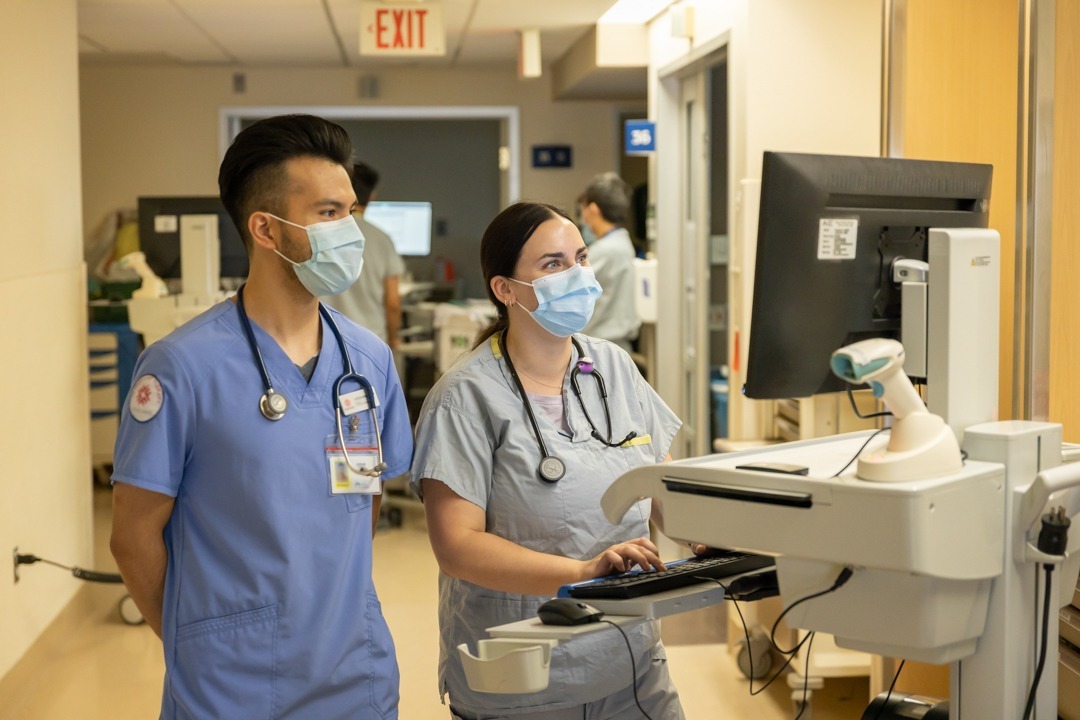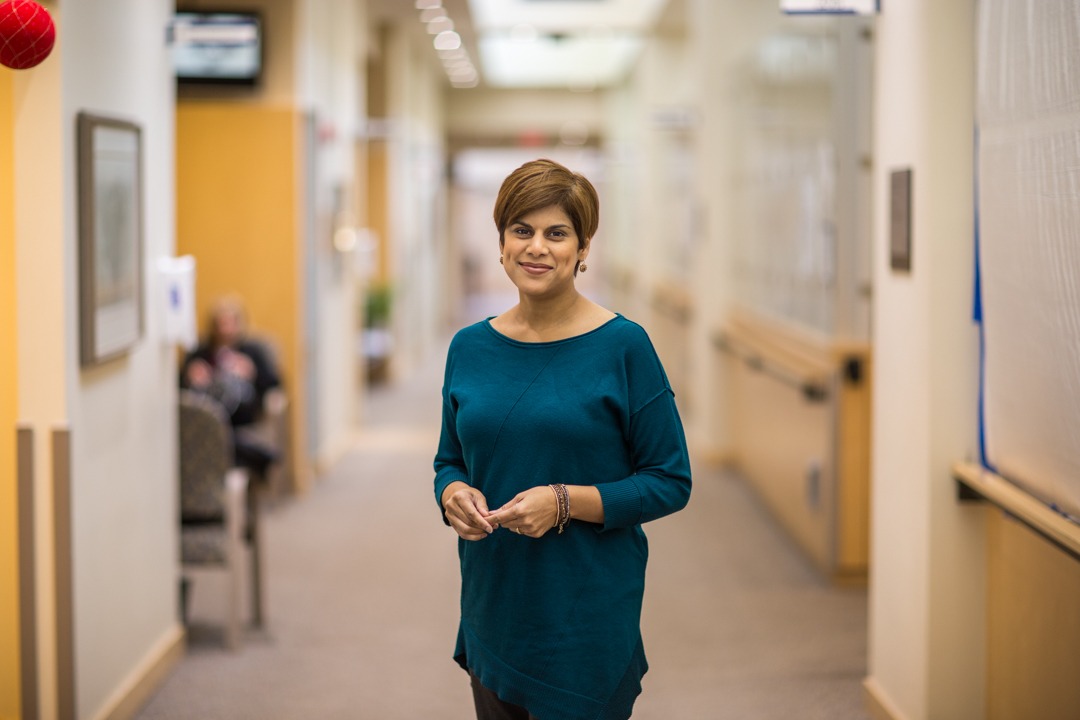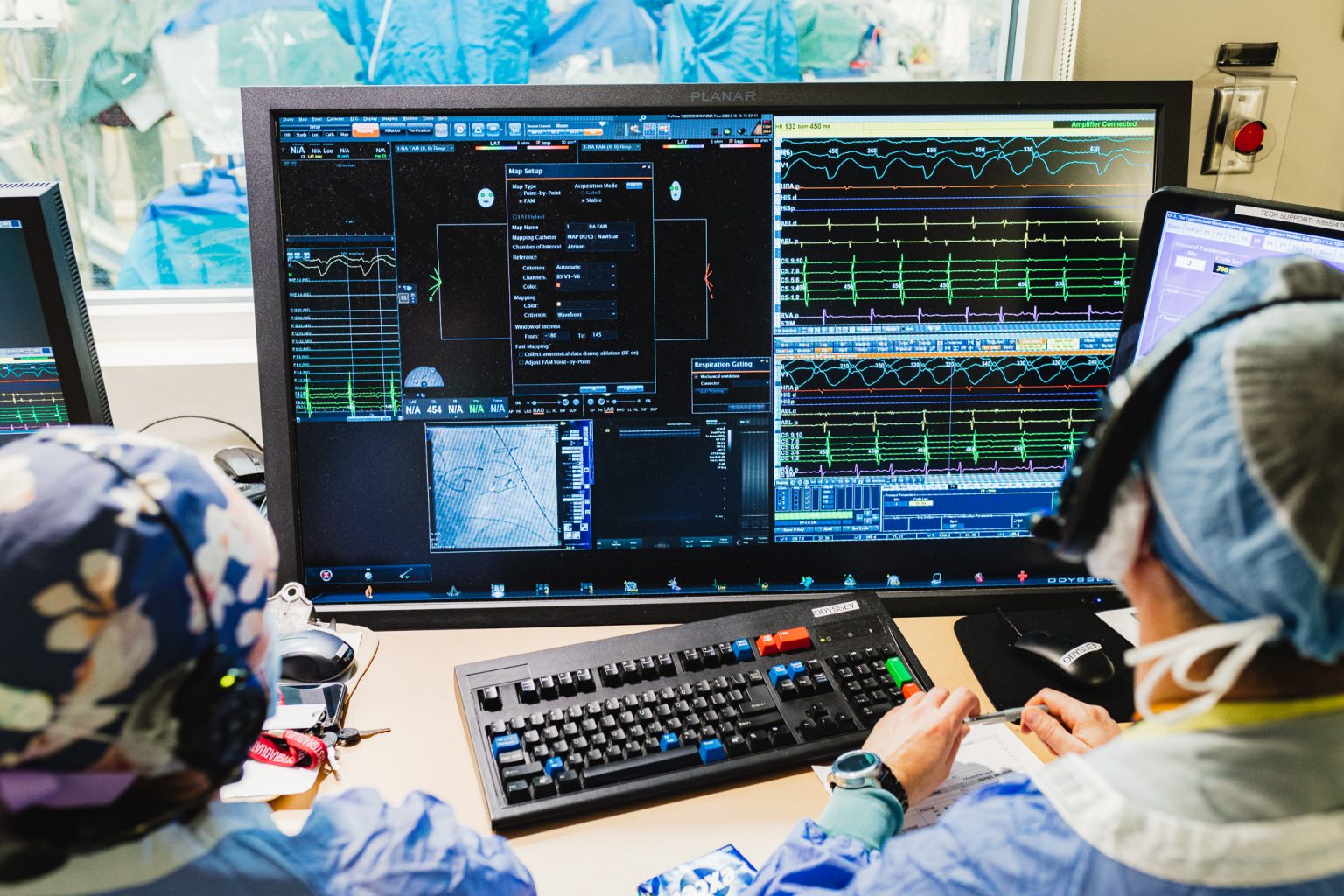
New MyChart app can help older adults, family members manage care
Tech-savvy older adults are among the many Hamilton Health Sciences (HHS) patients who can benefit from a new, free online health-care tool called MyChart by Epic.
Older patients often receive care from multiple areas of HHS, across multiple specialties. With MyChart, they can look up appointment details, the names of their hospital team members, lab and test results, medications, discharge summaries, doctors’ consult notes and more.
“It’s extremely user-friendly and offers many features.” — Michelle Leafloor, HHS vice-president of health information and technology services, and chief information officer
Patients will need a computer, tablet or mobile phone to use MyChart, which will be accessible through a website link, or as an app that can be downloaded from the Apple App Store or Google Play. MyChart will available starting June 4 when HHS launches its new hospital information system, also called Epic.
Older adults not comfortable using this technology can give access to a family member or other trusted adult such as their power of attorney.
Optional tool
“There’s no requirement for patients to use MyChart, but we highly recommend it because it’s such a valuable tool for managing personal health information,” says Michelle Leafloor, vice-president of health information and technology services, and chief information officer for HHS. “It’s extremely user-friendly and offers many features.”
“Video visits will be a very positive addition for seniors.” — Dr. Atul Sunny Luthra, HHS St. Peter’s Hospital.
Dr. Barry Lumb, executive lead for the HHS team implementing the new hospital information system, calls Epic MyChart a “game-changer” for patients.
“After June 4, they can use the app to access and update their personal health information at their convenience, which will empower them to be more informed and engaged in their health care experience,” says Lumb.
Why you’ll want MyChart
MyChart’s many other features include easy, secure virtual visits through video conferencing, and the ability to upload pictures of, for example, a rash or wound, to help with assessing and monitoring care.
“Video visits will be a very positive addition for seniors,” says Dr. Atul Sunny Luthra, a consultant geriatric psychiatrist at HHS St. Peter’s Hospital. “I would estimate that at least 80 per cent of visits could be done virtually, rather than in-person visits.”
Patients can share records with their non-hospital doctors and caregivers, enter their health information such as blood pressure within a secure personal health record space, and access health educational materials. MyChart can even connect to some existing personal health platforms like Apple Health.
Proxy access
An important feature for some older adults will be proxy access – the ability to grant another person access to their MyChart account. Examples of proxies include a family member, power of attorney or close friend.
In order to see a person’s chart, the proxy would make a MyChart account for themselves, even if they have never been an HHS patient. Then the patient would invite the proxy from their MyChart account.
This would allow them to see the patient’s medical information. Different levels of access are available, based on the patient’s wants and needs.
Signing up for MyChart is quick and easy, and there are several ways patients and their proxies can do this.
Patient-doctor relationship
While MyChart offers many benefits, Luthra cautions patients and proxies about trying to interpret physicians’ notes or test results on their own. “They may feel overwhelmed by such information, or they may turn to `Dr. Google’ to try and make sense of it.”
Instead, Luthra encourages them to reach out directly to the HHS physician managing the patient’s case.
“Patients and their proxies are our partners in care, and we don’t want to leave anything open to interpretation, or misinterpretation,” says Luthra. “It’s always best to discuss such things as test results, doctors’ notes and care plans directly with the physician overseeing the patient’s care.”




